Solo (A Life Rebuilt Alone)
“Solo” is my visual memoir—a body of work shaped by survival, memory, and transformation. I left Iran in 2011 and began the long, uncertain process of rebuilding my life far from home. Every piece in this series carries echoes of that journey.
At the heart of this work is the loss of my father, who died in a car accident when I was just 14. That grief has never left me; it quietly informs every place I’ve lived since—through the isolation of immigration, the challenges of starting over without financial stability, divorce, motherhood, the pandemic, and the birth of my second child.
My background in architecture shapes these paintings: layered, whimsical, and structured scenes that hold memory and emotion at once. Mushrooms—qarch in Farsi—appear throughout the series as quiet symbols of resilience. In my culture, they are seen as nature’s hidden gifts after rain, offering hope in difficult conditions. In my work, they stand in for me—growing quietly in darkness—or for my father’s spirit, watching gently from the margins.
This collection is presented as my first solo show at TAG Gallery in Los Angeles, on view from June through July 2025.
-
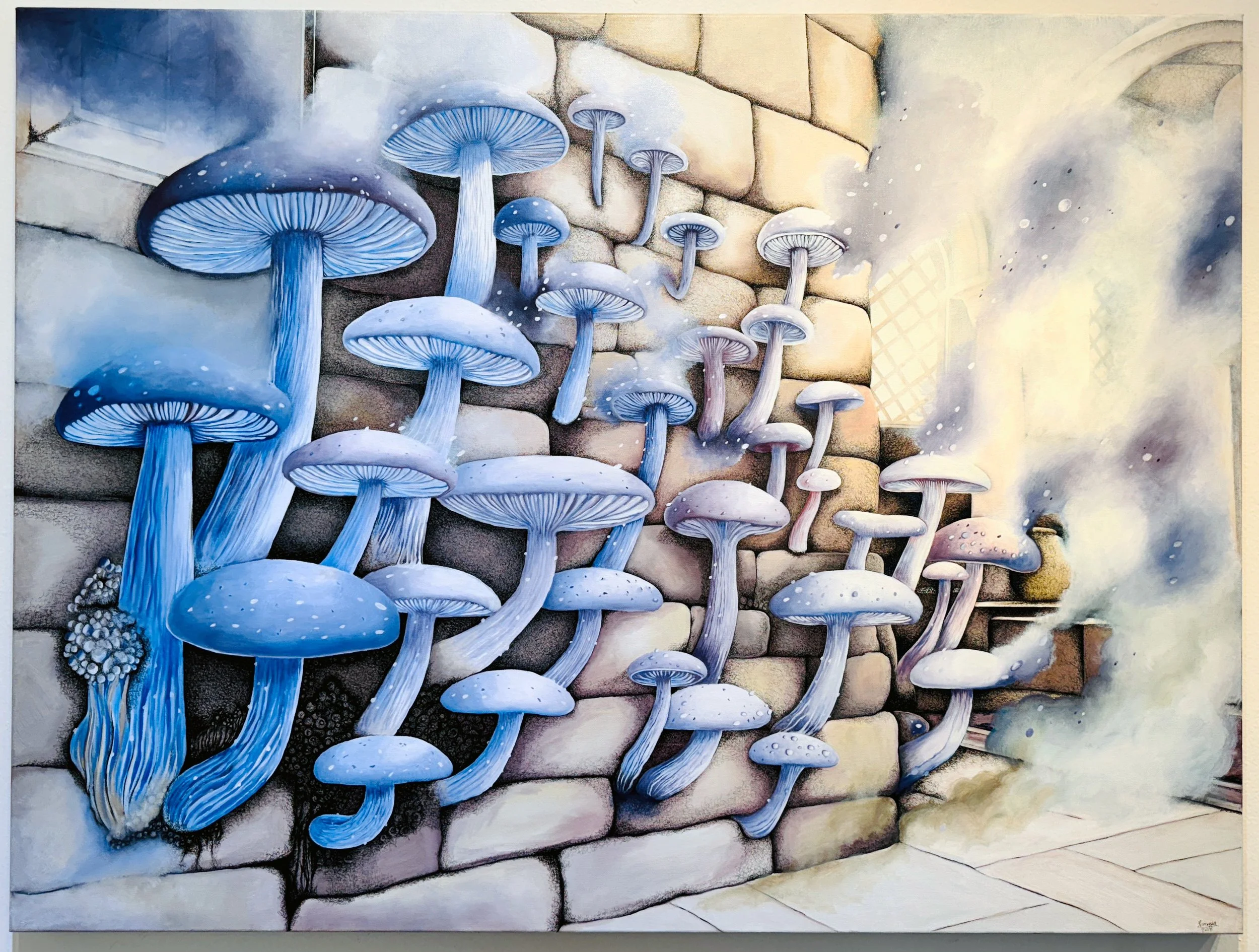
Mashhad
Size: 24” x 36”
Medium: Oil Paint
In the holy city of Mashhad, where joy felt forbidden and streets echoed with silence, our small home became a secret sanctuary. Outside was darkness and rules; inside, music played, movies flickered on a banned VHS, and love grew quietly between walls. My father taught us honesty in a world that demanded hiding. From that tension, from that soft rebellion, the mushrooms began to grow; strange, luminous, born from the cracks in our silence. Mashhad is their story, a forest of memories sprouting from the shadows.
-
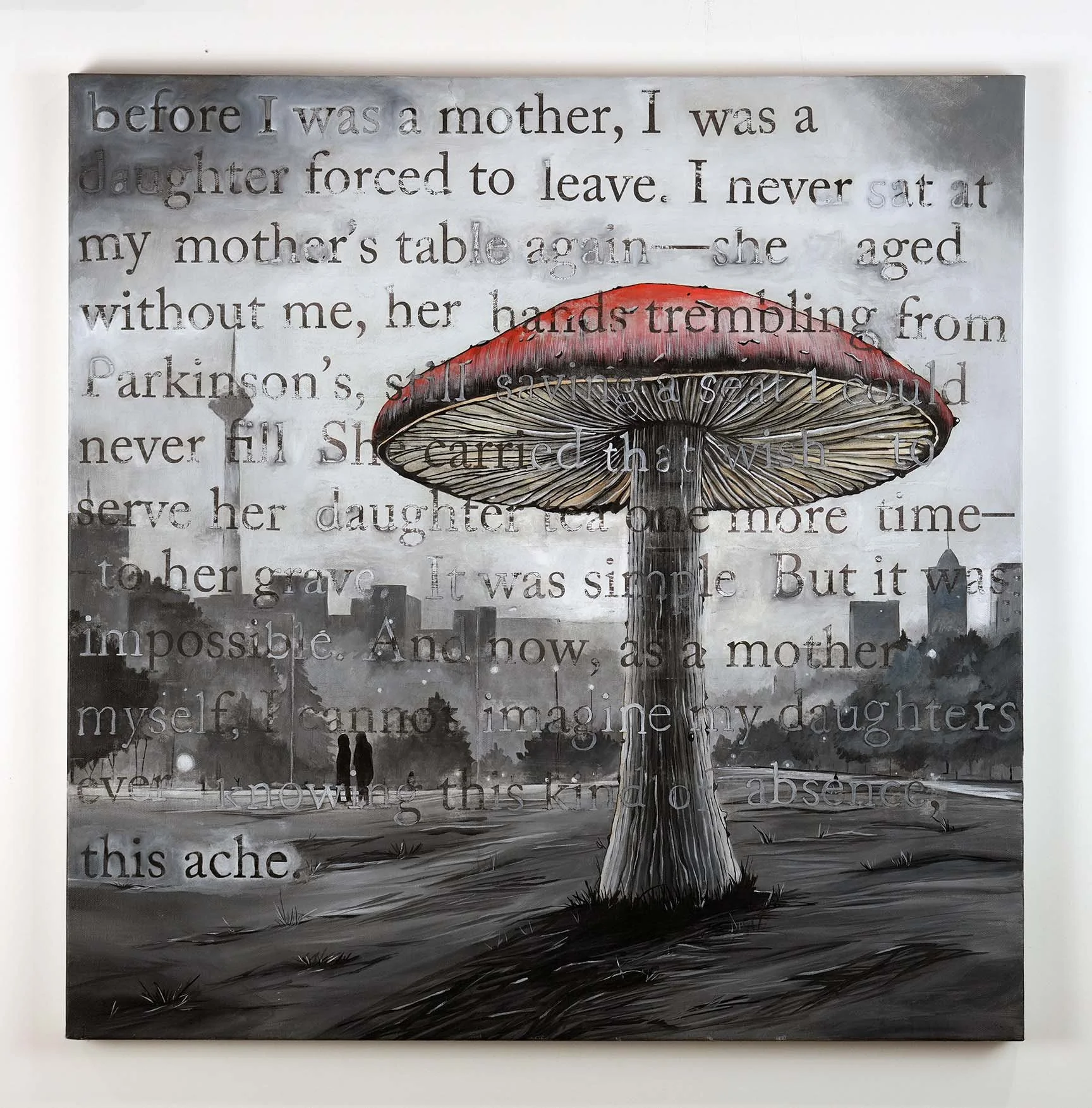
Tehran - $1,200
Size: 24” x 24”
Medium: Oil Paint
In a city I can no longer reach, a table waits with an empty cup. A woman with trembling hands sets it each day, whispering to shadows. The daughter she waits for never crosses the threshold. The streets blur behind a curtain of memory—this is the last scene I carried with me, folded into my coat like a forgotten letter.
-
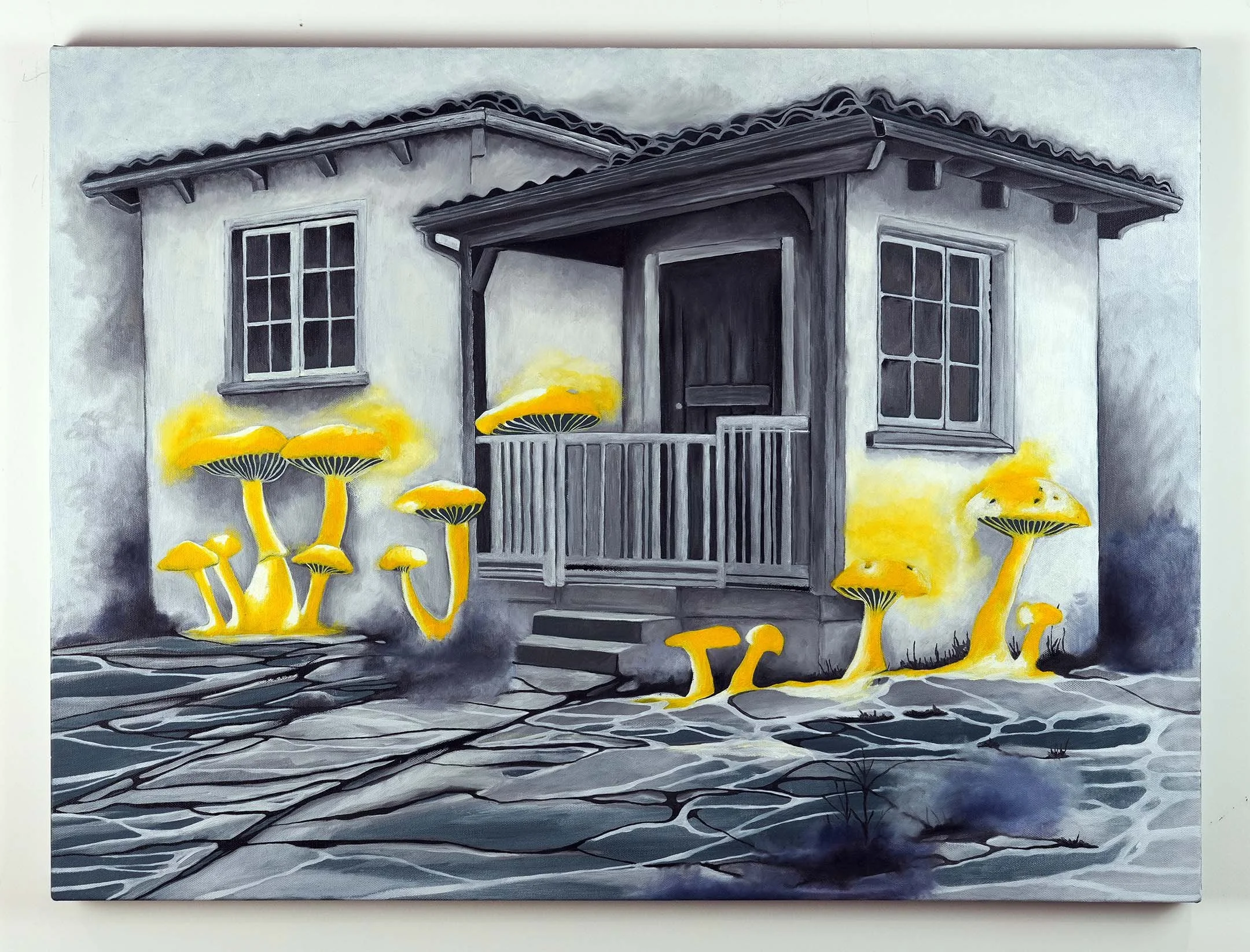
Crenshaw - $1,200
Size: 24" x 30"
Medium: Oil Paint
One day, the earth softly said, “You can stay.”
A door opened, and for the first time, the key fit in my hand. The walls listened kindly, the corners gathered my breath. This land, strange and sunlit, whispered a name I hadn’t known was mine. -
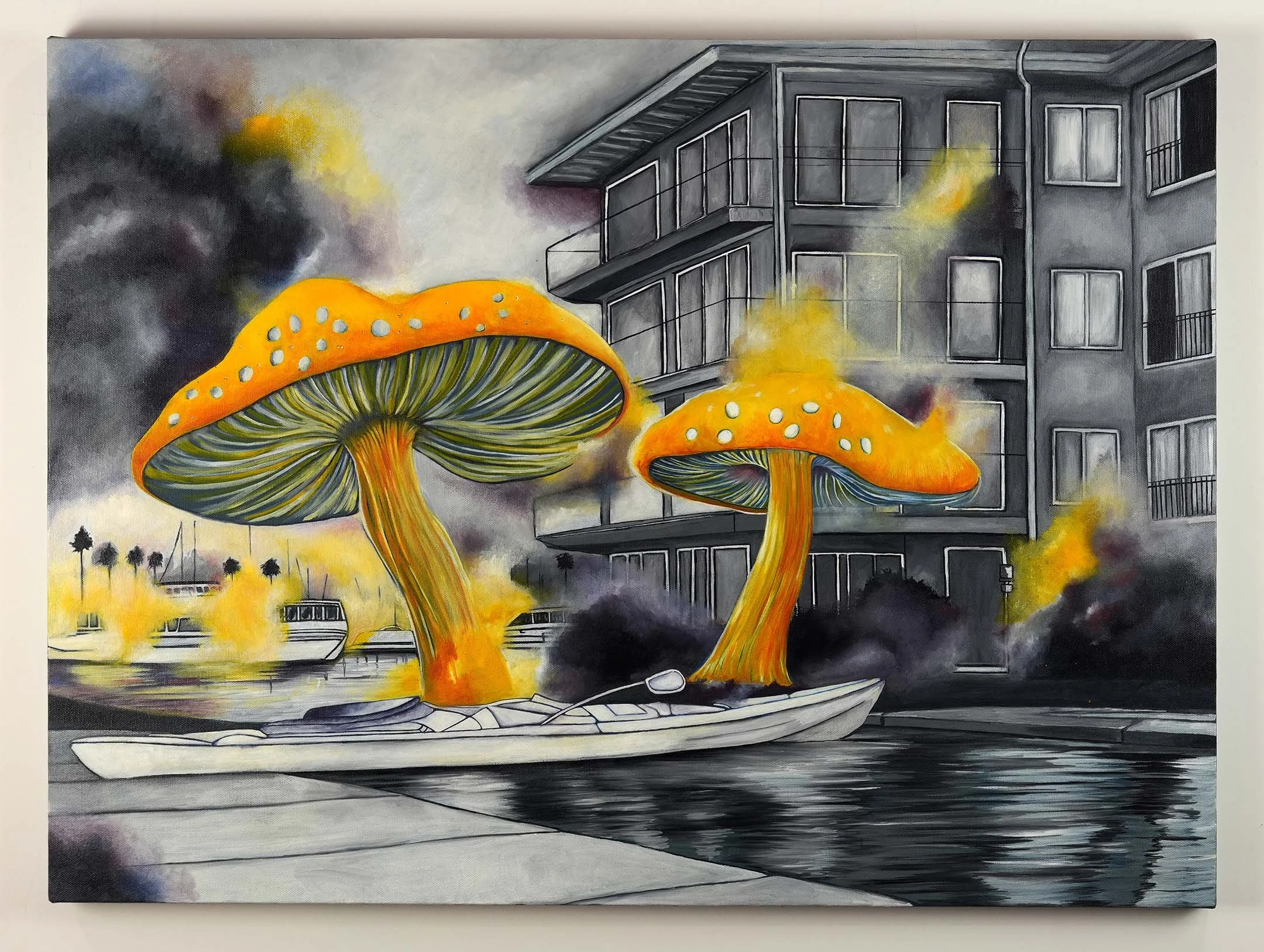
Marina Del Rey - $1,200
Size: 24" x 30"
Medium: Oil Paint
Fog wrapped around my ankles like questions. I walked the same loops—along water I couldn’t read, beside houses that never knew my name. I was alone, almost a mother, and the sea never spoke my language. I wandered through those days like a ghost, looking for a map in the mist.
-

Sister - $1,600
Size: 24” x 36”
Medium: Oil Paint
In a room that floated on a mushroom, my daughter waited for the world. For three years, no children came, no friends, only the silence of stuffed animals and window light. Then, one night, a seed of laughter bloomed beside her—a sister, born from her wish. Above it all, a shadow with kind eyes watched, like a tree that never stopped growing, even in the dark.
-
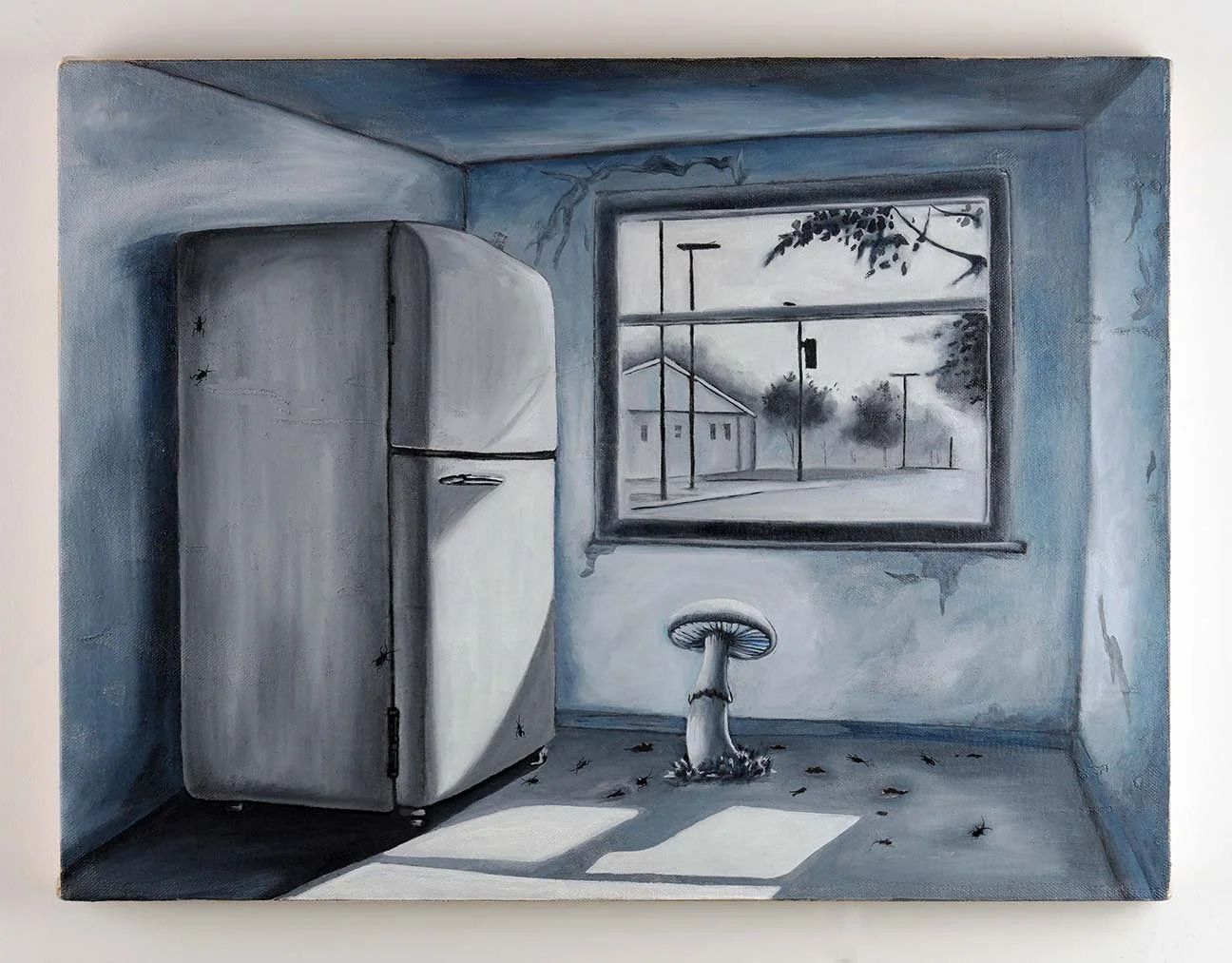
DTLA - $950
Size: 12” x 16”
Medium: Oil Paint
There was a house that hummed with secrets. Behind every door, a name you didn’t know. I whispered through its halls, invisible. My food vanished like magic tricks gone wrong, the kitchen crawling with creatures who laughed in the night. I lived like a question mark there—small, curled, waiting to become a sentence.
-
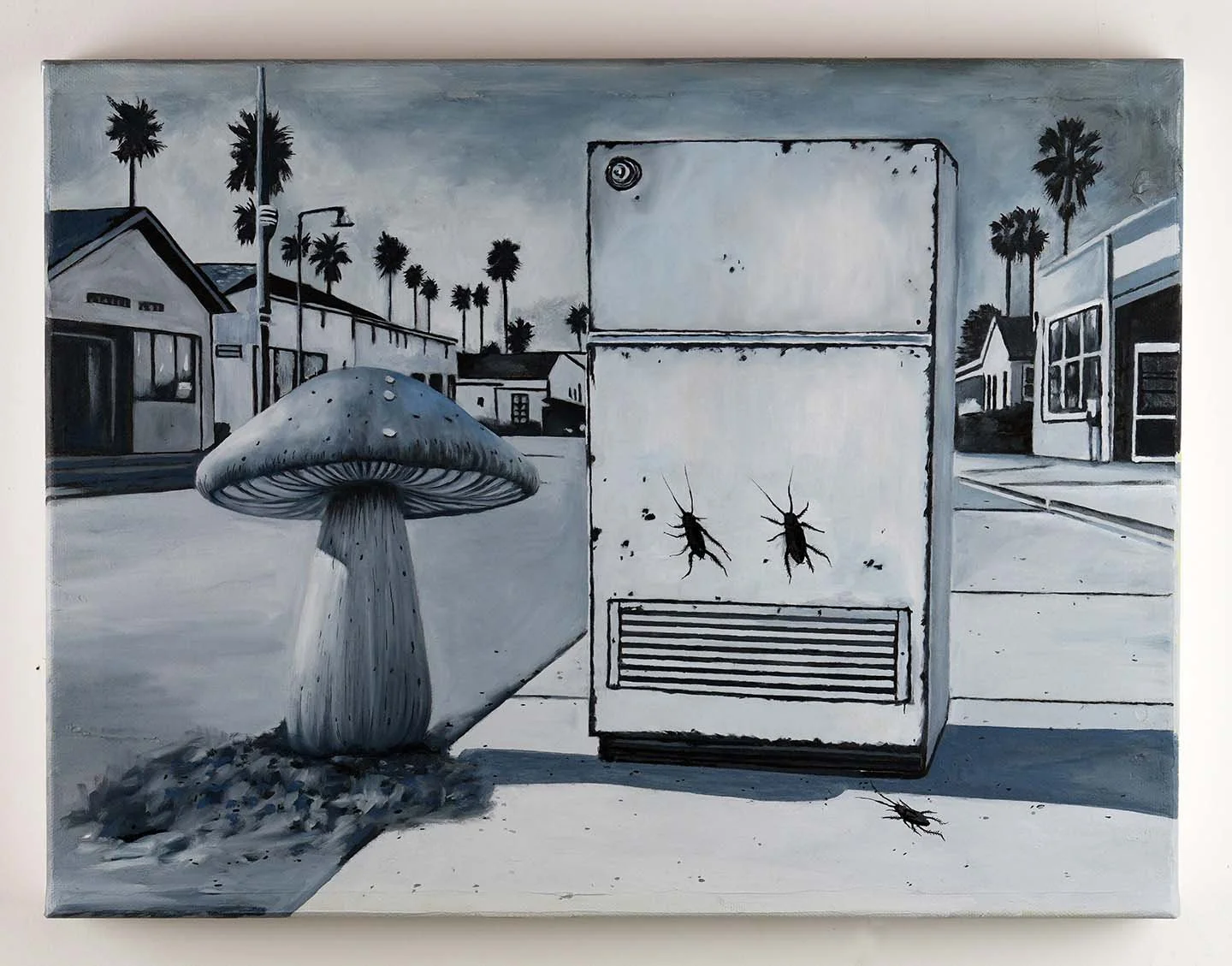
NoHo - $950
Size: 12” x 16”
Medium: Oil Paint
A place I rented but never really lived in. Architecture school consumed my time, and the house belonged more to the cockroaches than to me. I’d pass through to greet the fridge I never trusted—its hum familiar, its contents untouched, its dark corners alive with quiet, knowing movement. The room held my name, but the walls didn’t recognize me.
-
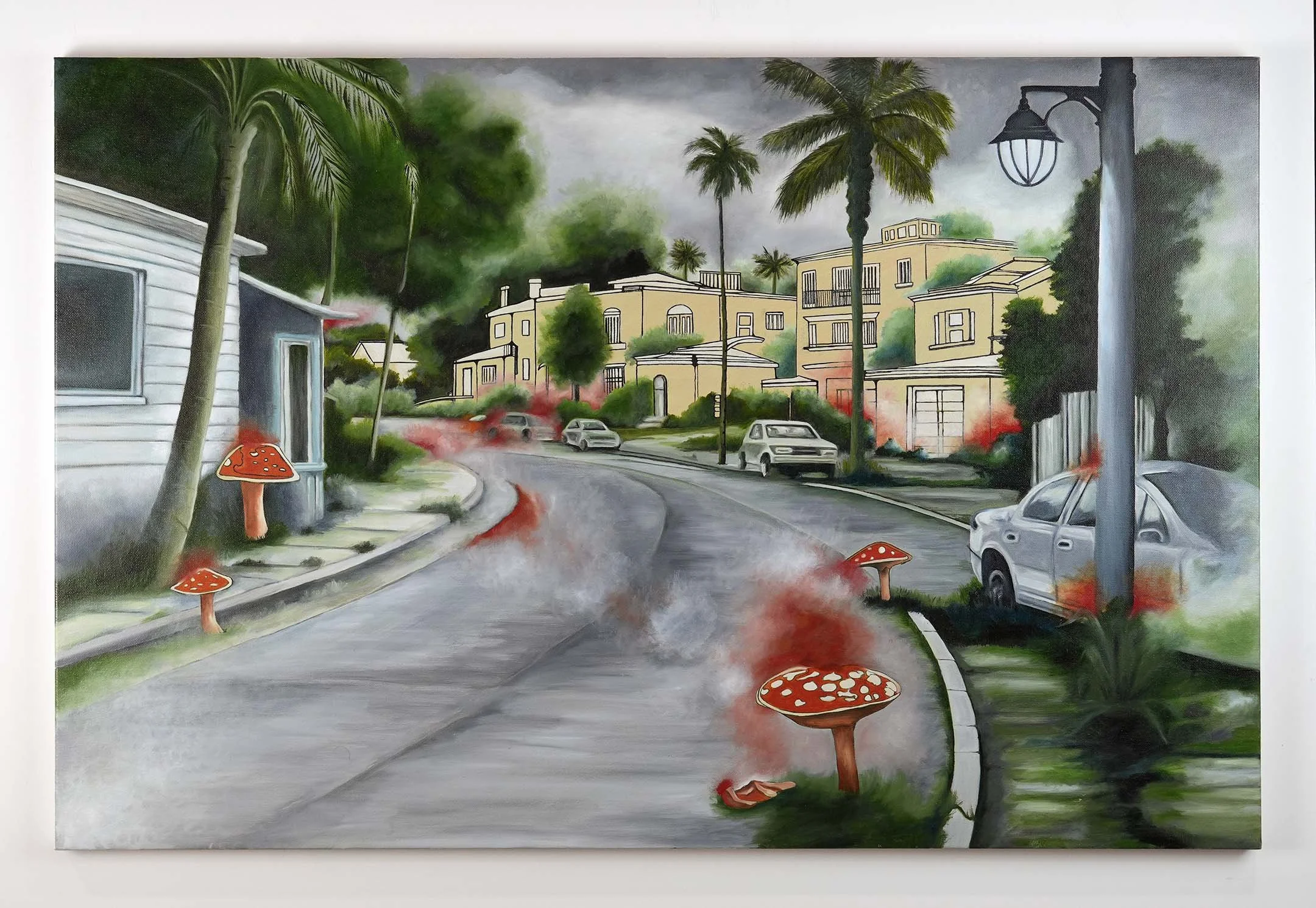
Pandemic - $1,400
Size: 24” x 36”
Medium: Oil Paint
During the pandemic, the streets turned hollow—faces vanished behind windows and screens. Outside, it felt like a ghost town where only mushrooms kept me company, sprouting along the cracks. Masks lay like fallen petals, dropped from frantic hands rushing home to scrub groceries and silence the fear. The world was distant, pixelated, and yet strangely alive beneath the quiet.
-
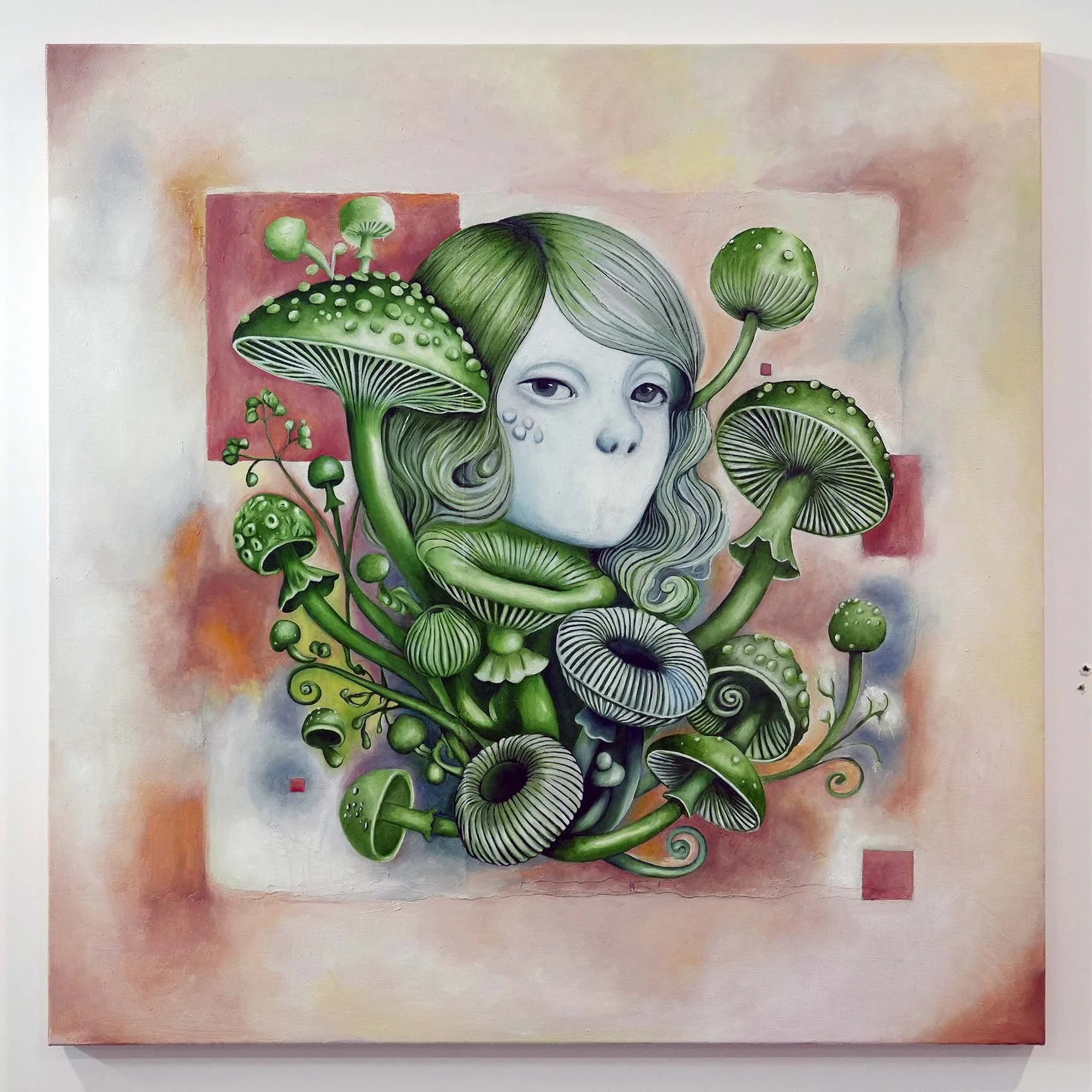
Muted - $1,200
Size: 24” x 24”
Medium: Oil Paint
"Muted" reflects the tension of being silenced by opposing voices, portraying the struggle of holding onto individuality amidst conflicting ideas. The surreal blend of human and nature forms embodies resilience and quiet defiance.

SOMAYA ETEMAD: A FUNGIBLE LIFE; By Peter Frank
Of the realms of art and of awareness, the biographical and the mycological do not seem the most likely to share a border (much less a porous one). We do acknowledge the remarkable presence of mushrooms, toadstools, puffballs, and all things kingdom funga throughout our biosphere. What kind of thing – especially so humble a thing -- nourishes us, poisons us, liberates our minds, or inspires our imaginations more dramatically? No wonder the familiar mushroom form occupies such a prominent place in our collective imagination, delicious, deadly, and distorting,
The prevalence of mushrooms in the pictorial (as opposed to architectural) work of Somaya Etemad provides that work a childlike insouciance – up to a point. Etemad is not a children’s book illustrator (although she has the skills and playfulness to be one). Such tales as she limns – she “tells” them less than she infers them – are in fact hard-bitten recollections of loss and terror, displacement and disillusion, at least as much as they are conjurations of comforting memories. The good, such as it is, with the bad – it’s all history for Etemad, but driven by the knowledge, the experience, that that history is at least as much “now” as it is “then.”
In her finely wrought pictures, some seemingly more woven than drawn, Etemad wanders restlessly (and often reluctantly) from place to place, situation to situation, environment to environment, looking for a berth, somewhere that shelters and nurtures, but finding only disruption. The sudden loss of her father when she was 14 left a wound that still refuses even to scar; it weeps continually as grim dreams of desolate spaces, many of which are places Etemad has actually visited, even inhabited. The transition to refugee was of course a marked struggle in her life, as it is in all those who must flee for whatever reasons. But in Etemad’s case it came after her victimization by the religious regime in Iran, which imprisoned her for mocking it in published cartoons.
Thus, when Etemad landed on these shores, she was already a veteran of several personal and political conflicts. Her early years as an American resident were easier only by degree. Only now does her life look peaceful – and balanced enough for Etemad to be able to reflect on its dramatic turns and surreal contexts.
Etemad is indeed a surrealist – albeit one sensitive to the delicate as well as to the monstrous in life and art. In this she follows in a line of surrealist women painters like Remedios Varo and Leonora Carrington, Léonor Fini and Charley Toorop, painters who manifested a distinctly feminine (and arguably feminist) outlook. Like theirs, Etemad’s art is emphatically pictorial but nebulously narrative, resistant to social convention but soft-spoken in their arguments and ultimately transcendent rather than triumphant in their visual universes.
The mushroom is the hero of Etemad’s story/stories; it is also the mise-en-scène, the deus ex machina, and the leitmotif. The mushroom is the protagonist and the backdrop at once. It is essentially the language, not just the protagonist, of Etemad’s discourse. It appears everywhere and modifies everything. Etemad does not depict mushrooms so much as render them, choosing them (from an in fact limited range of species) for their inherent sense of animation. They are the storytellers; Etemad simply provides them the stories to tell. Lest that sound as if she surrenders agency to them, however, we have to acknowledge the fine line of her pen, the exquisite poise of her brush, the virtuosic skill she employs with all her media. Etemad claims authorship of these apparitions by realizing them as vividly and as gracefully as she does. She speaks through her mushrooms, but they in. turn speak equally through her.
Somaya Etemad does not make pictures or tell stories; she re-lives and re-imagines them in visible languages born in her dreams. We human beings live, prominently or vicariously, by our dreams, but not all of us can re-live through them, much less do so with such urgent charm. Do not look for Etemad’s history in her art, look for the sensation of living she has come to design via her subconscious. Any of us can claim we, too, generate such sensations, and we do. But do we do so coherently? Do my dreams make sense to you? They do only when they can escape the dreamer, when the dreamer has the skill to convey the ambient flavor of the dream. And all it may take to convert mute imagery to shared revelation is a consistency of language -- in Etemad’s case, that consistency manifesting in the ubiquity of gentle fungi nourishing and at the same time representing us. Etemad’s mushrooms are of her and for her – and for us and of us as well.
Los Angeles, June 2025
